[New Sancai Compilation and First Release] "The Garden of Earthy Delights" is a triptych painted on three oak panels by the early Dutch master Hieronymus Bosch (approximately 1450-1516). . In the collection of the Museo del Prado in Madrid, Spain, since 1939.
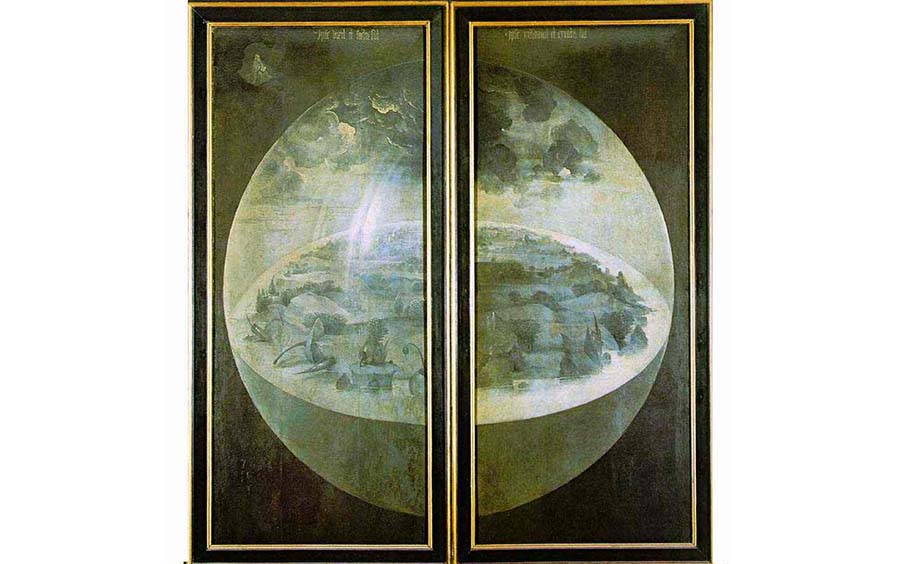
△ The shell of "The Garden of Earthly Delights": This is Bosch's most famous and ambitious work. This triptych depicts several biblical and heretical scenes, possibly illustrating the history of mankind in light of medieval Christian teachings. Art historians are still divided over whether the middle panel of the triptych is a moral warning or an attempt to depict the entirety of Paradise Lost.
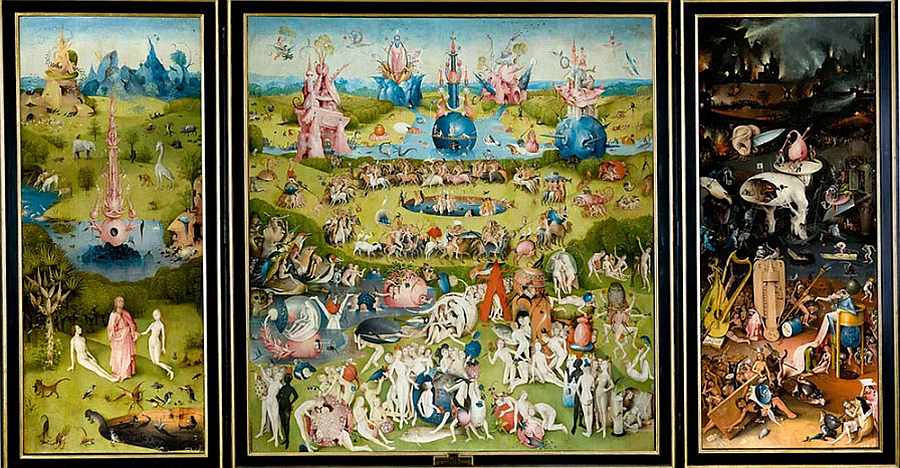
△ The overall view of "Earthly Paradise" unfolded: After this large triptych is unfolded, it represents the Garden of Eden, the Earthly Paradise, and Hell from left to right. The left panel of the triptych depicts Adam and Eve and many wonderful creatures in paradise; the middle panel depicts the paradise on earth, with a large number of naked bodies, huge fruits and birds; the right panel depicts the scene of hell, filled with a large number of animals. The fantasy-looking jailer punishes criminals with all kinds of weird tortures. Triptychs are usually appreciated in sequential order.
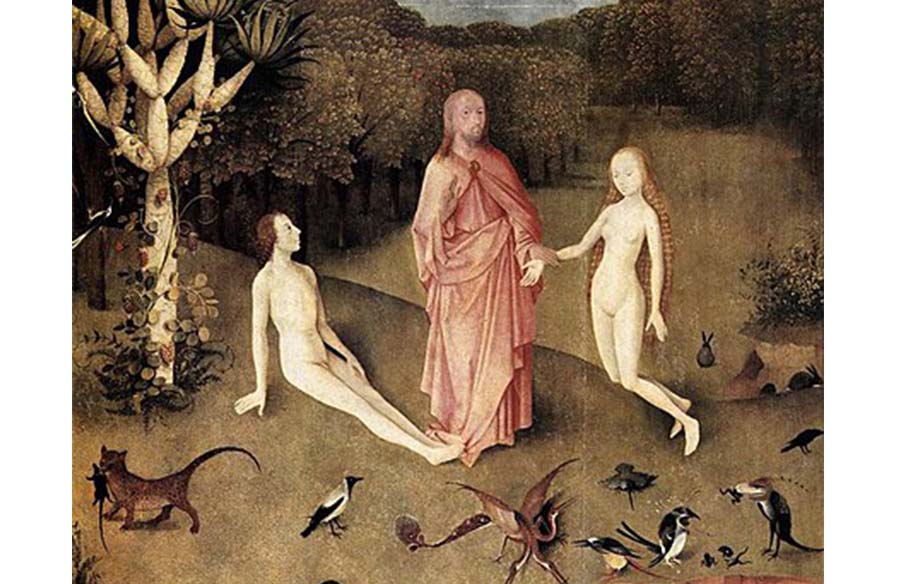
△ Part of "The Garden of Earthly Delights" (left painting on the inside page): Depicting a scene in the Garden of Eden, it is sometimes interpreted as God introducing Eve to Adam. In this picture, God holds Eve's wrist, showing God's blessing on the union of Adam and Eve.
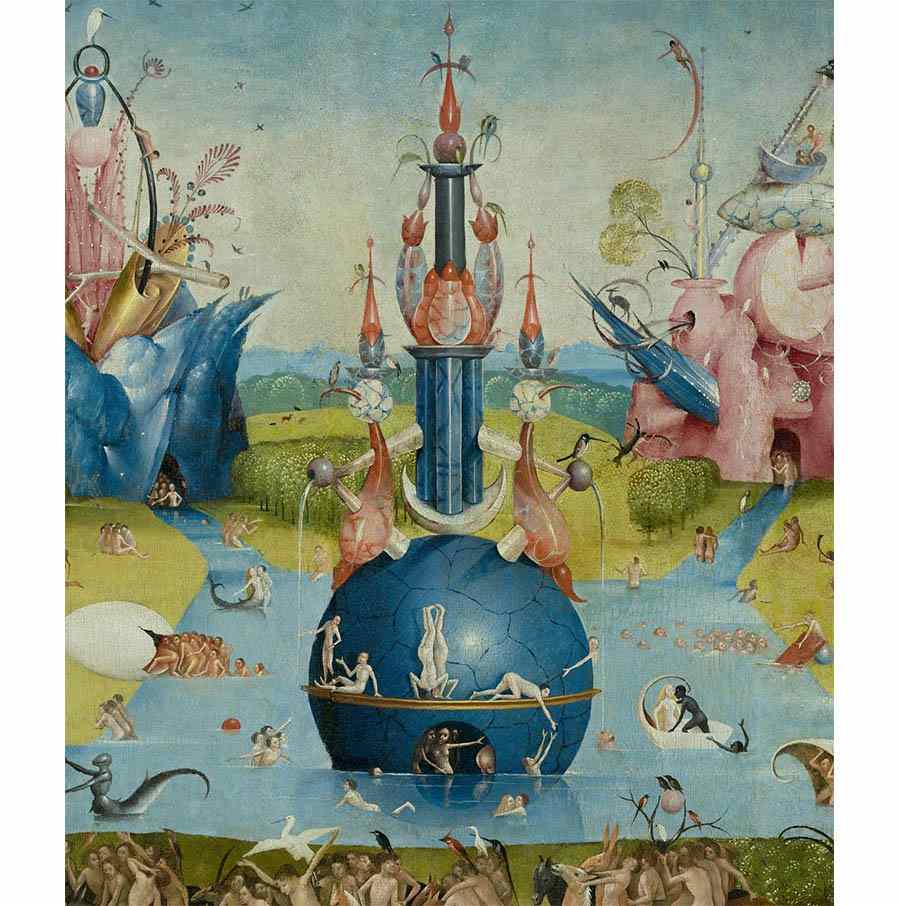
△ Part of "Paradise on Earth" (middle painting on the inside page): This painting in the center of the inside page depicts the vast landscape of "Paradise on Earth", which is also the origin of the name of this triptych. This painting shares a horizon with the adjacent left painting, suggesting a spatial connection between the two scenes. In the paradise, there are naked figures playing and playing with various creatures, some of which are realistic and some of which are fantasy. Some art critics believe that the eroticism in the central painting can be seen as a place of spiritual decadence or corruption.
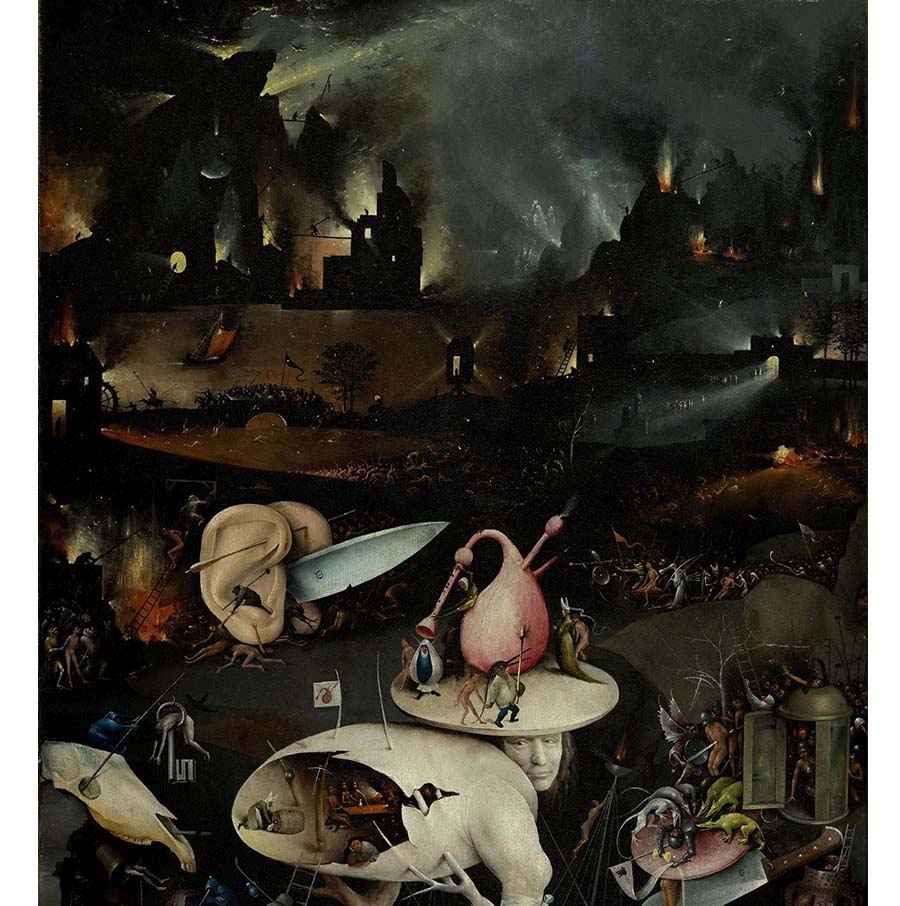
△ Detail of "Hell" (the painting on the right side of the inside page): The picture on the right side of the inside page depicts hell. The top part of the picture is a long beam of light emitting from a burning city. The lower part of the picture depicts a human being succumbing to the temptation of evil. A world subject to eternal damnation and retribution. The colors of the pictures tend to be creepy and cold.
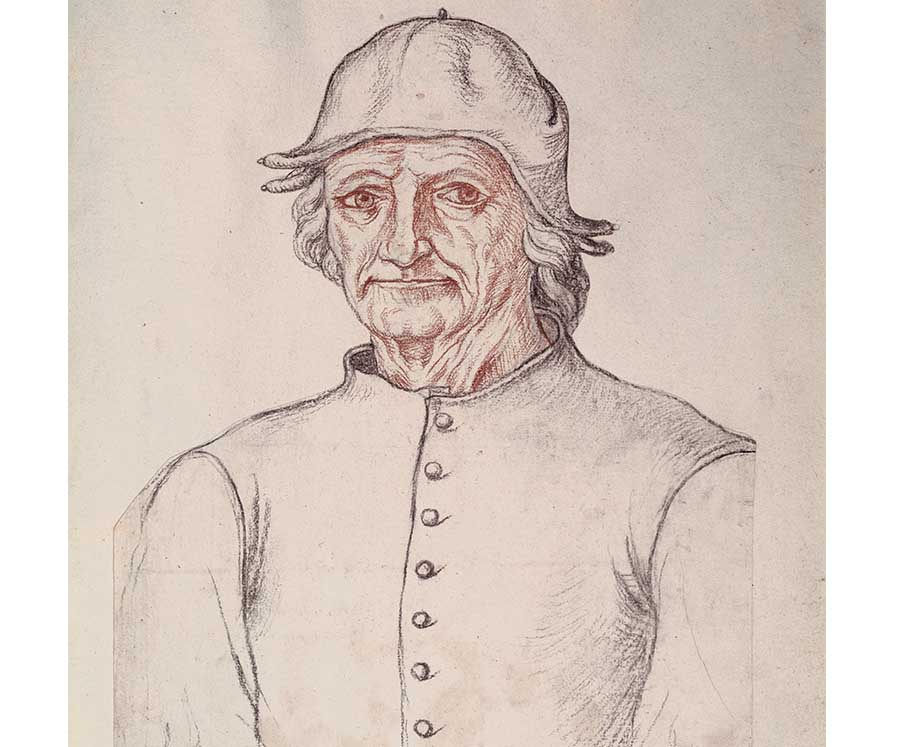
24hH06.jpg
△Painter: Hieronymus Bosch Self-Portrait
(Source: Wikipedia)
(Compiled by: Bai Ding)
(Editor: Jiang Qiming)
(Source of the article: Compiled and published by New Sancai)
